The Beekeepers Calendar Year and Guide to Bee Keeping Throughout the Year
A beekeepers calendar year of what to do at each stage of the year in keeping honey bees. Know when to feed, when to harvest and when to stock the hives among other things. By following our basic guide to bee keeping you should have a very successful year. On that page you will also be able to find free plans for homemade hives, and honey extractors.
A BEEKEEPERS CALENDAR FOR SPRING
The beekeepers calendar for spring is really busy. Around mid-February in the northern hemisphere, or mid-August for those in the southern hemisphere, spring is around the corner and your bees are happy to have survived the winter. However, they need your help.
Spring is the time to provide your bees with some quick and easily accessible food in the form of sugar syrup as available nectar is still scarce. Wait until the end of the following month to remove the cover, or when the weather has warmed up.
Remember too, that you should have grown honey plants on your farms and homesteads for the honey process to be successful.
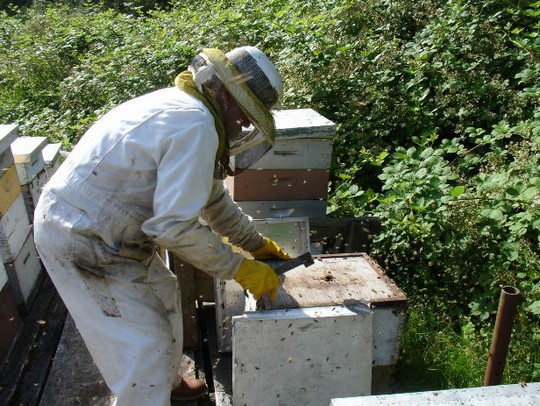
For those of you who are wanting to start bee keeping, spring is the time to start your new hive.
During spring make regular visits to the hive - at least once a week, especially from mid-April in the northern hemisphere, mid-October for those in the southern hemisphere, during the time when the bees are making honey. Weekly inspections should continue until fall/autumn when you start to cover up the hive again for winter.
In late spring it is important that you make sure that the queen bee has not laid eggs in the honey store. One can do this by adding the removable supers and fix in place the queen excluder.
In order to prevent the bees from swarming, look for any queen cells which are longer than the rest and pointed. These need to be destroyed and are often built in areas within the hive that are difficult to find. When you do find them, squash them with a hive tool. However, if you need to replace your existing queen bee with a younger one, then leave them alone.
As soon as the outer hive frames of the brood box are beginning to fill up with either brood or honey, you should fix the super. This allows the bees to store honey in the super, while the queen continues to lay eggs in the brood box. Thus making life much easier for you when you want to remove the super and not having to worry about injuring the queen in any way.
A BEEKEEPERS CALENDAR FOR SUMMER
You will know if your queen bee is still present by looking at the cells and the new eggs. If there are eggs present, the queen was there at least 2 day's ago. If you don't see any new eggs, but only bee larva, that means that she was there 3-8 day's ago. Therefore finding larva is not enough, you need to look for new eggs.
To prevent over-crowding the supers should be removed when the cells have been capped and the honey removed, new supers added and any new queen cells detected should be destroyed.
Summer is also the time when your bees could swarm. They do this when they don't have enough room for all the bees in the present hive as the queen can lay more than 2000 eggs a day, resulting in many more bees for your hive than it can readily accommodate if left unchecked. The problem is that once they do start swarming, half the hive will leave, along with the queen bee, leaving you with the rest of the bees without a queen. These bees will be useless until they get a new queen or the old one is returned.
If you manage to find the swarm you can always capture them again and start a new hive. Entice the new swarm to stay by filling their feeder with sugar syrup. If, however you don't find the swarm because they have traveled too far, you will need to go back to your hive and working through the frames, destroy all but one of the queen cells that has a viable queen larva in it. Within 25 days a queen will hatch, and within 10 days will begin laying eggs.
By late summer the queen's egg production will begin to drop off and the chance of swarming has decreased too.
A BEEKEEPERS CALENDAR FOR FALL / AUTUMN
The beekeepers calendar for fall / autumn is now winding down.Fall is the season when your queen bee's egg laying is dramatically reduced, the drones begin disappearing and your hive population decreases. However, be aware too that this is the time that other bees could be on the look out for honey and could end up robbing your hive!
If you have done your job of beehive maintenance in summer, when autumn comes around, all you have to worry about is extracting the main bulk of the honey. Harvesting the honey is done from late summer or early fall / autumn.
It is always wise not to rob the beehive of too many frames of honey. This is because the honey is really for the bees to tide them over winter and if you remove all the honey your bees will die. Leave at least 60 pounds of honey behind if you have very cold winters, and in addition, make up a sugar syrup for them; 1 kg of sugar to 500 ml of water. Check to see if you need to fill up the feeder with more syrup if necessary.
If your winters are mild then you will need to keep back 30-40 pounds of honey for your bees.
Fall is also the time that you should guard against the varroa mite by placing some medicated strips of plastic into the hive. Suspend 2 such strips in the brood chamber between the frames of the brood and remove them after 6 weeks.
A BEEKEEPERS CALENDAR FOR WINTER
The beekeepers calendar for winter is the time that the bee keeper can relax. The cold weather inhibits the bees' movements, and they remain in their hives. In order to help your bees survive the winter, you will need to minimize the loss of internal heat in the hive by narrowing the opening to the hive. You can do this with blocks of wood so that a very small opening exists, but still allowing for good ventilation.
If the bee hive doesn't have enough ventilation condensation will form, turn to ice, and will prove deadly for your bees.
Leave the hive undisturbed throughout the winter, and only open again in the spring, when the weather has warmed up considerably.
A BEEKEEPERS CALENDAR - CONCLUSION
We hope that this beekeepers calendar year will guide you in your quest for good beekeeping and hive maintenance throughout the beekeeper's year.Did you find this page helpful?
Sharing is a way of saying, "Thanks!"





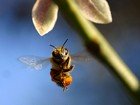
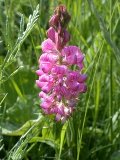

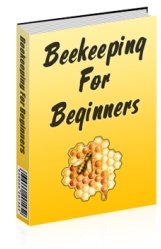
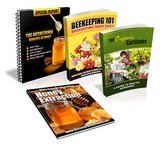
New! Comments
Do you have something of value to add? Leave me a comment in the box below.